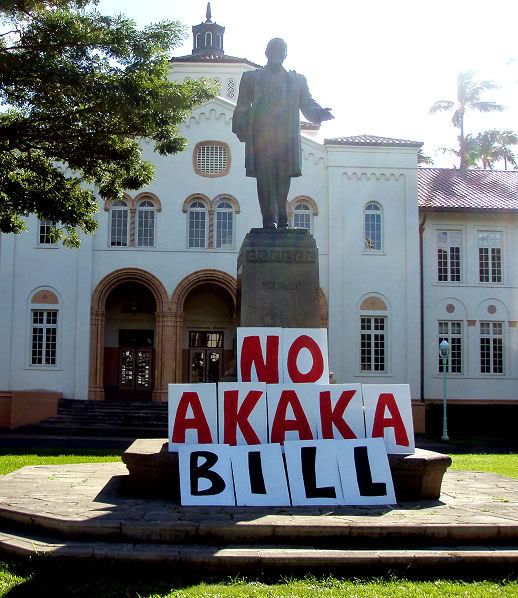Scientists surveying American Samoa's coral reefs say Sept. 29's tsunami obliterated some corals and damaged others to the point thatthey may not recover.
Researchers say more assessments will be needed to get a full sense of how the disaster affected coral in theU.S. territory. But in at least one area, the damage was so severe, andthe affected area already in such bad shape before the tsunamis, thatthe coral may never return.
There's an additional threat the surviving coral may suffer secondary damage weeks after the tsunamis ifwaves drag heavy debris from people's wave-wrecked homes — likerefrigerators, tin roofs and other objects — across the reefs. Moundsof household goods dislodged by the giant waves are still sitting inthe water off tsunami-torn villages.
Corals, which are colonies formed by small, fragile animals called polyps, provide vital habitatsfor fish, sea slugs, shrimp, sea worms and many other marine speciesthat find food and take shelter among the reefs. This makes measuringthe extent of the tsunami-inflicted damage important for understandingthe disaster's effect on the broader environment.
Tsunamis generated by an 8.3-magnitude earthquake killed at least 32 people inAmerican Samoa. About 150 were killed in nearby Samoa and Tonga.
A team led by Douglas Fenner, a coral reef monitoring ecologist withAmerican Samoa's Department of Marine and Wildlife Resources, hassurveyed about 20 sites around the territory so far. The condition ofthe coral they examined ranged from untouched to destroyed. Severalspots lost 20 to 30 percent of their existing coral.
Fenner also found unblemished reef next to corals that were wiped out. That was thecase near Leone, a town where at least 10 people died and dozens ofhomes were destroyed. He first saw that delicate corals to the left ofthe village were in perfect shape.
"Then I got right in front of the village and man, the coral had just been broken to bits," Fennersaid in a telephone interview from the territory's capital, Pago Pago.
Paul Brown, marine ecologist with the National Park Service, said the reefoff Faga'alu — an urbanized area near downtown Pago Pago — was in poorshape even before the tsunamis hit. Years of pollution and sediment inthe area's runoff had led to poor water quality offshore, deprivedcorals of the sunlight they needed to grow and smothered the reef.
Only about 15 to 20 percent of the reef had living coral before Sept. 29. Then the waves tore 70 percent of the remaining away.
"The reef looks like a nuclear bomb went off. It was pretty catastrophicdamage," said Brown. "When you have that level of impact, it will bedecades, if at all, that that area recovers."
In contrast, damaged reefs that were healthy before the disaster should bounce back in three to four years, leaving no scars.
American Samoa's corals were generally fairly healthy before the tsunami,particularly compared to reefs in the Caribbean or those off theHawaiian island of Oahu. Still, Brown said they weren't as pristine ascorals in Kiribati, a small Pacific island nation, or the Line Islands,which are tiny Pacific atolls controlled by Kiribati and the U.S.
Fenner said he was optimistic for a recovery, given the relative health of thecoral. He also noted corals have evolved to cope with tsunamis andother natural disasters.
"The reefs have learned to live with it," Fenner said. "So as long as we humans are not chronically damagingthe reef and putting heavy stresses on it, hopefully it will recoverwell."
Coral reefs surround large parts of American Samoa's islands, which sit in tropical waters about 2,500 miles southwest ofHawaii. The islands, which are home to about 65,000 people and coverroughly the same land area as Washington, D.C., host 2 percent of thecoral under U.S. jurisdiction.
A report issued earlier this month by the territorial governor's Coral Reef Advisory Group saidrefrigerators, mattresses, tin roofs and other household materials werestill in the water off Poloa, a village slammed by the waves. There's apossibility debris now languishing in streams and shorelines maycollect on reefs if it's flushed out to sea, the report said.
Charles Birkeland, a University of Hawaii coral reef expert, said coral can grow back if its foundation is in good shape.
"But if you start grinding them with furniture and things, that scrapes the base. It's much worse," Birkeland said.

This Oct. 4, 2009 photo shows a large chunk of coral that was ripped up from the reef and washed ashore in front the village of Leone inAmerican Samoa. Scientists surveying American Samoa's coral reefs saySept. 29's tsunami obliterated some corals and damaged others to thepoint that they may not recover. (AP Photo/Eugene Tanner)

This Oct. 13, 2009 photo provided by the National Park Service shows a tire on a coral reef in Faga'alu Bay, American Samoa. Scientistssurveying American Samoa's coral reefs say Sept. 29's tsunamiobliterated some corals and damaged others to the point that they maynot recover. (AP Photo/National Park Service, Paul Brown)

This Oct. 4, 2009 photo shows large chunks of coral that were ripped up from the reef and washed ashore in front the village of Leone inAmerican Samoa. Scientists surveying American Samoa's coral reefs saySept. 29's tsunami obliterated some corals and damaged others to thepoint that they may not recover. (AP Photo/Eugene Tanner)

This Oct. 13, 2009 photo provided by the National Park Service shows a coral reef in Faga'alu Bay, American Samoa which was flattened by atsunami. Scientists surveying American Samoa's coral reefs say Sept.29's tsunami obliterated some corals and damaged others to the pointthat they may not recover. (AP Photo/National Park Service, Paul Brown)

This Oct. 4, 2009 photo shows large chunks of coral that were ripped up from the reef and washed ashore in front the village of Leone inAmerican Samoa. Scientists surveying American Samoa's coral reefs saySept. 29's tsunami obliterated some corals and damaged others to thepoint that they may not recover. (AP Photo/Eugene Tanner)

This Oct. 4, 2009 photo shows large chunks of coral that were ripped up from the reef and washed ashore in front the village of Leone inAmerican Samoa. Scientists surveying American Samoa's coral reefs saySept. 29's tsunami obliterated some corals and damaged others to thepoint that they may not recover. (AP Photo/Eugene Tanner)





 Aloha Kakou,The Nuclear Regulatory Commission has confirmed that they will continue to accept public testimonies beyond October 13th on the Army's request to possess Depleted Uraniun at Schofield on the island of Oahu and at Pohakuloa on the island of Hawaii.Depleted uranium is by far the worst threat ever to Hawaii. It can never be cleaned up, and it will be here for BILLIONS OF YEARS poisoning our air, water, and aina!Although there is now no established deadline for public comments, there is a deadline to formally request a hearing. The Nuclear Regulatory Commission has granted an extension to two well-known warriors for peace and the aina. They have until October 27, 2009 to make their formal request for a hearing but they have no legal counsel and no means of hiring legal counsel. They need our help!While the Nuclear Regulatory Commission carries out this process to consider the Army's request, live-fire training continues at Pohakuloa which can "aerosolized" Depleted Uranium causing it to become airborne. Once aerosolized the Depleted Uranium poison can drift for miles and miles, and it may be coming soon to a neighborhood near you!Please click here or copy this address into your browser for more information:
Aloha Kakou,The Nuclear Regulatory Commission has confirmed that they will continue to accept public testimonies beyond October 13th on the Army's request to possess Depleted Uraniun at Schofield on the island of Oahu and at Pohakuloa on the island of Hawaii.Depleted uranium is by far the worst threat ever to Hawaii. It can never be cleaned up, and it will be here for BILLIONS OF YEARS poisoning our air, water, and aina!Although there is now no established deadline for public comments, there is a deadline to formally request a hearing. The Nuclear Regulatory Commission has granted an extension to two well-known warriors for peace and the aina. They have until October 27, 2009 to make their formal request for a hearing but they have no legal counsel and no means of hiring legal counsel. They need our help!While the Nuclear Regulatory Commission carries out this process to consider the Army's request, live-fire training continues at Pohakuloa which can "aerosolized" Depleted Uranium causing it to become airborne. Once aerosolized the Depleted Uranium poison can drift for miles and miles, and it may be coming soon to a neighborhood near you!Please click here or copy this address into your browser for more information: 

